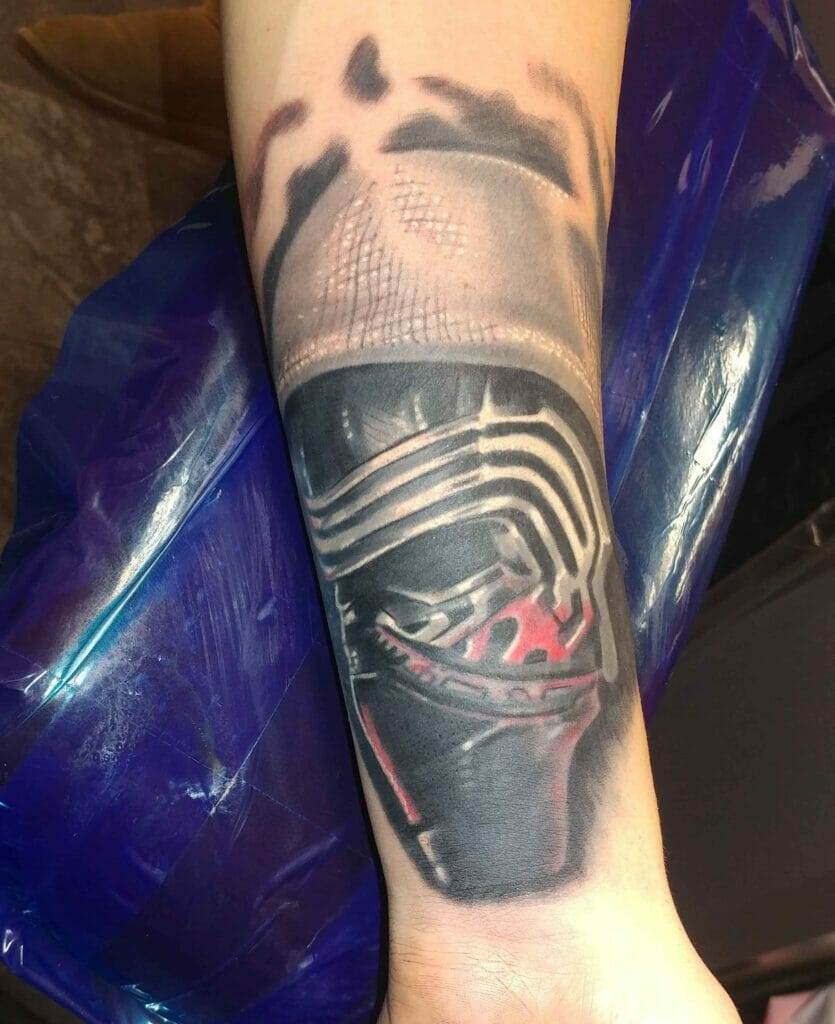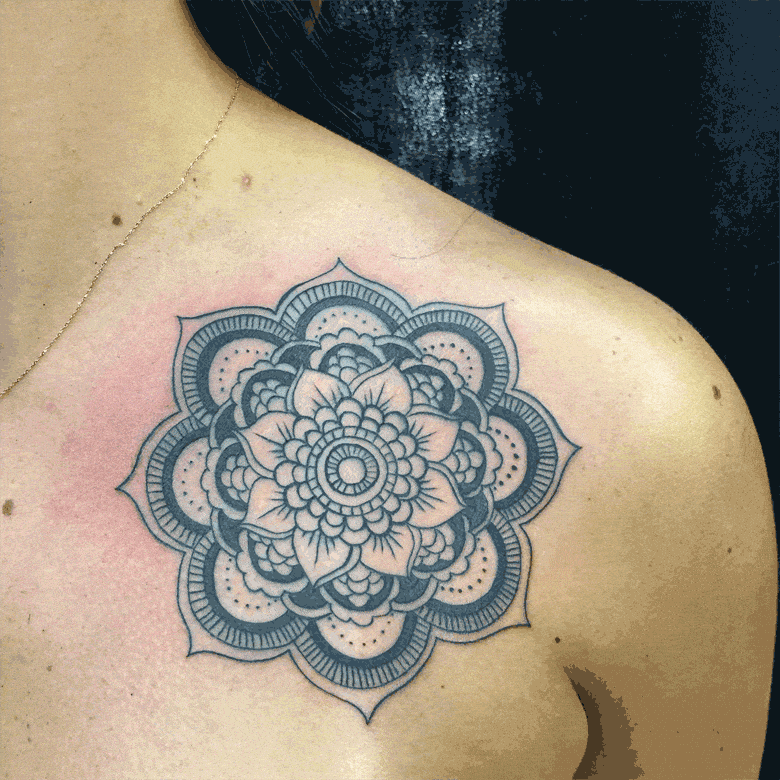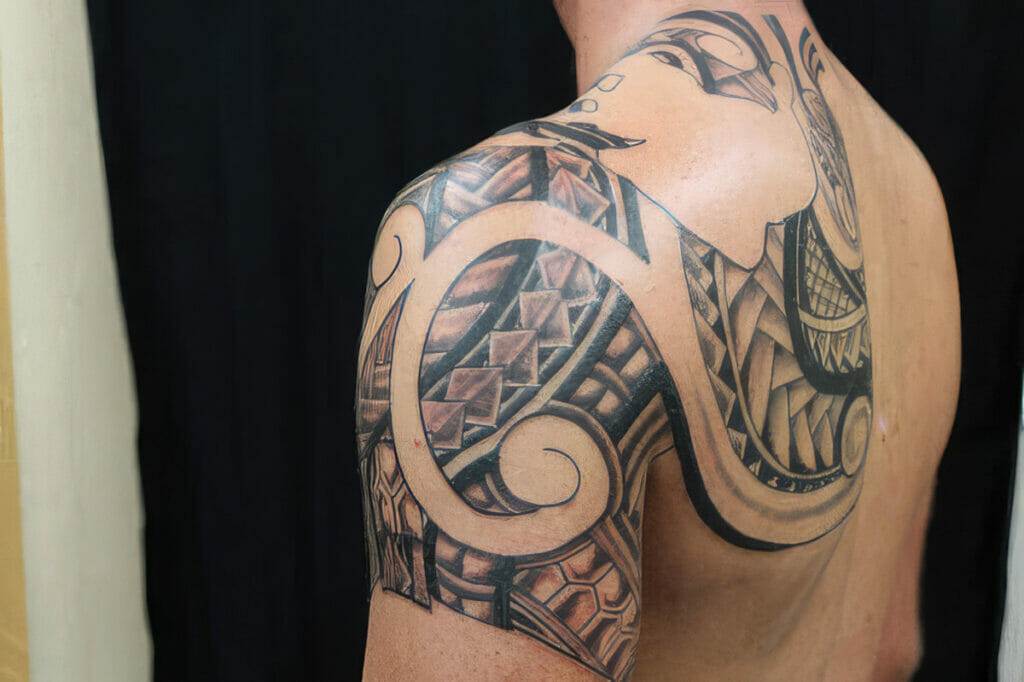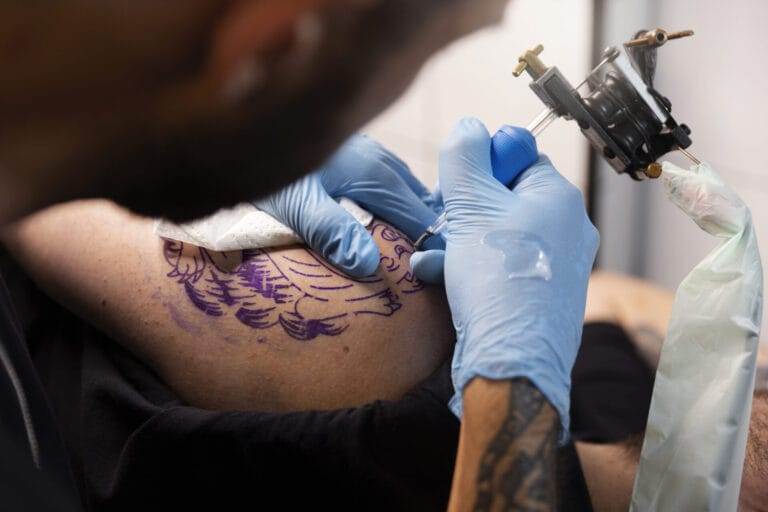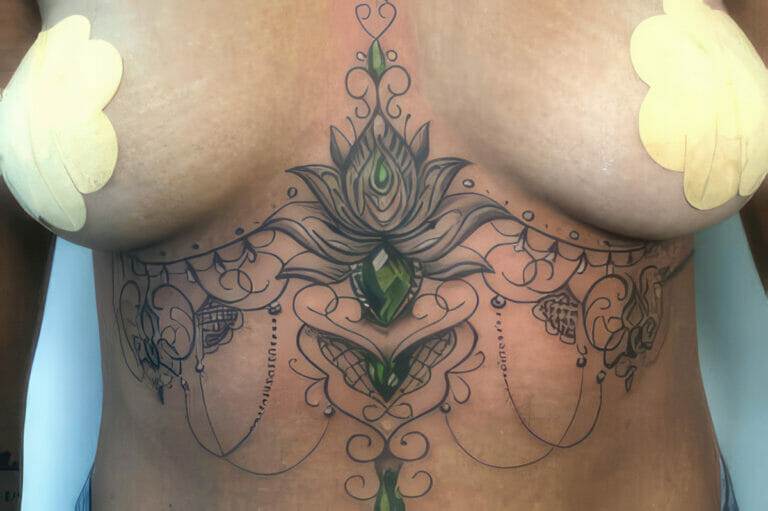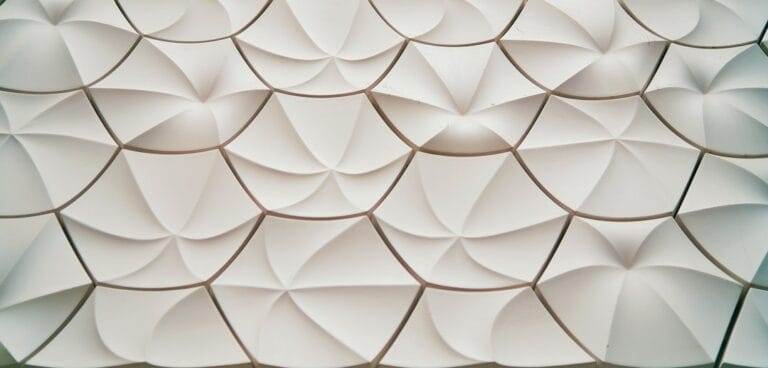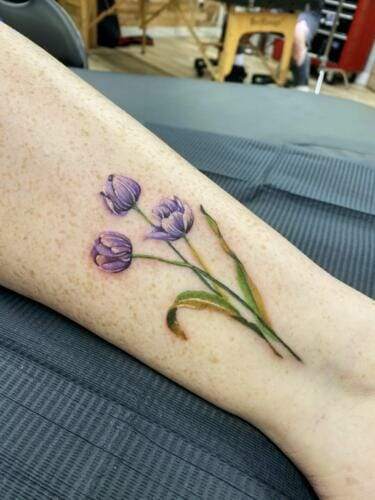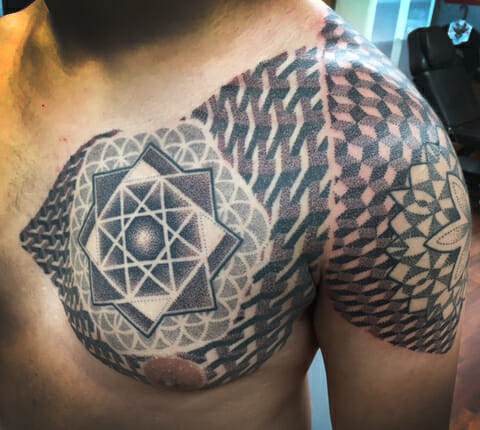
Overview of Scar and Stretch Mark Coverage with Tattoos
Understanding Scar and Stretch Mark Formation
Scars and stretch marks are skin imperfections that many individuals experience throughout their lives. Scars typically form as a result of injury or surgical procedures, where the skin goes through a natural healing process, leading to a loss of collagen and elasticity. This can cause the skin to appear discolored or textured. Similarly, stretch marks are often the result of rapid stretching of the skin, such as during pregnancy, puberty, or significant weight changes. When the skin is stretched too quickly, the underlying collagen and elastin fibers can tear, leading to those noticeable marks. Understanding how these marks form is essential, as it lays the groundwork for why some people seek tattoo coverage as a solution. While scars and stretch marks may be seen as blemishes, they tell a story of resilience and change in the body. Each mark is unique, with different textures, colors, and depths, which can influence the effectiveness of tattoo coverage.
Benefits of Using Tattoos to Cover Scars and Stretch Marks
Tattoos can serve as a powerful form of self-expression and a means to reclaim confidence for those looking to cover their scars or stretch marks. Here are some of the benefits of opting for tattoo coverage:
- Enhanced Aesthetics: A well-designed tattoo can integrate beautifully with the skin, transforming an unwanted mark into a piece of art that enhances overall appearance.
- Psychological Boost: Many individuals report feeling more confident and empowered after covering their scars or stretch marks with tattoos, as it allows them to embrace their bodies on their own terms.
- Customization: Tattoos offer endless design possibilities. From floral motifs to intricate patterns, individuals can choose symbols or images that resonate with them personally, turning a scar into something significant and meaningful.
- Long-lasting Solutions: Unlike temporary makeup or creams, tattoos provide a permanent solution for camouflage, allowing for continuous wear without the need for regular touch-ups.
Choosing to cover scars and stretch marks with tattoos can be an empowering process that aids in self-acceptance. As individuals consider this option, they can look forward to not just hiding imperfections but also celebrating their unique narratives through beautiful artwork on their skin.

Preparing for Scar and Stretch Mark Cover-Up Tattoos
Consultation Process with a Tattoo Artist
Once an individual decides to cover their scars or stretch marks with a tattoo, the consultation process with a tattoo artist becomes a vital first step. This initial meeting sets the tone for the entire experience, ensuring that both the client and the artist are on the same page. Here’s what typically occurs during this process:
- Discussion of Expectations: Clients can openly discuss their goals, sharing what they hope to achieve through the tattoo. This might include specific designs, colors, or techniques best suited for their skin type and the nature of the marks.
- Assessment of Scars and Skin: The artist will carefully examine the scars or stretch marks to understand their texture and color, which helps in determining effective coverage techniques. An artist’s experience in working with scar tissue is crucial here, as different scars may respond differently to ink.
- Creative Collaboration: During the consultation, the client and artist brainstorm ideas. This collaborative spirit allows artists to suggest design modifications that can enhance coverage and visual appeal while considering the wearer’s personal style.
- Realistic Outcomes: It’s important to discuss what can realistically be achieved. A good artist will help set appropriate expectations to ensure that clients feel informed and confident about the outcome.
Choosing the Right Tattoo Design for Coverage
Selecting the right design is instrumental in achieving a successful cover-up tattoo. Individuals should consider the following factors:
- Personal Significance: Choose a design that resonates with personal history or values, as this strengthens the emotional connection to the tattoo.
- Complex Patterns vs. Solid Colors: Intricate designs can be effective in camouflaging scars due to their ability to distract the eye. Patterns such as floral motifs, mandalas, or abstract art often work well. On the other hand, solid colors or darker shades can help blend scars into the surrounding skin.
- Placement Consideration: The tattoo’s placement should enhance both the design and the coverage. Placement on different body parts can change how light interacts with the tattoo and therefore the appearance of the scars.
- Framing and Flow: Consider how the design can flow with the body’s natural lines. A design that complements the shape of the area can create a more seamless look.
By thoughtfully engaging in the consultation process and carefully choosing a design, individuals can set the stage for a successful tattoo covering their scars and stretch marks, transforming a personal narrative into a visual masterpiece.
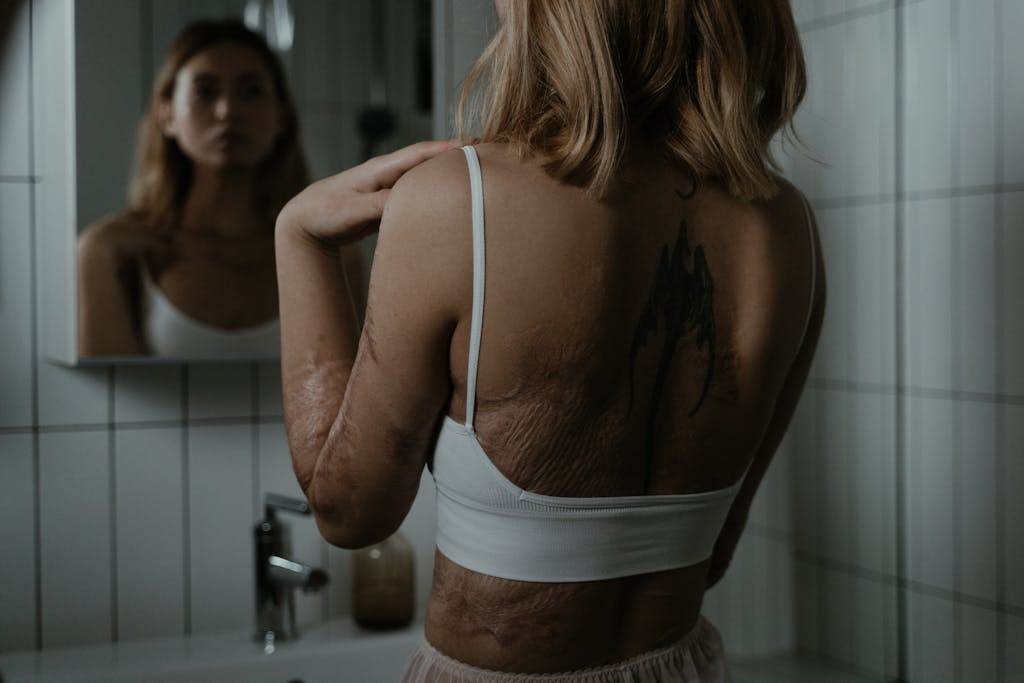
Best Tattoo Styles for Covering Scars and Stretch Marks
Realism Tattoos for Naturalistic Coverage
When it comes to covering scars and stretch marks, realism tattoos can be an exceptional choice. This style aims to create lifelike representations of subjects, making it ideal for individuals looking to blend their imperfections into stunning artwork. Here’s why realism tattoos work effectively for cover-ups:
- Attention to Detail: Realism tattoos require a high level of skill and precision. Artists focus on every detail, from shadows to highlights, which helps disguise the texture and color differences in scars.
- Seamless Integration: By mimicking nature, realism tattoos can seamlessly integrate with the skin’s surface, drawing the eye away from the underlying imperfections. For instance, a beautifully rendered flower or animal can naturally camouflage different scar types.
- Therapeutic Connection: Many people choose realism tattoos that hold personal meaning, such as a beloved pet or a cherished memory. This can transform a scar into a tribute, thereby easing emotional distress associated with body marks.
- Example Designs: When contemplating realism tattoos, here are popular subjects to consider:
- Portraits of loved ones or children
- Intricate floral designs, where colors and shading can mask scars
- Realistic animals, like birds or butterflies, can provide a sense of freedom and beauty.
Geometric and Mandala Designs for Camouflaging Scars
On the other hand, geometric and mandala designs offer a distinct approach to covering scars and stretch marks. These styles can create captivating patterns that effectively distract the eye and enhance overall aesthetics.
- Intricate Patterns: Geometric tattoos utilize shapes and lines to create detailed designs. The complexity of these patterns can effectively obscure imperfections, making them less noticeable.
- Balance and Harmony: Mandala tattoos are renowned for their symmetrical beauty and harmony. Their repetitive patterns can provide a visually engaging backdrop, camouflaging scars while also conveying a sense of peace and balance.
- Customization Potential: Both geometric and mandala styles can be tailored to suit individual preferences. Clients can select specific shapes, colors, and sizes to personalize the tattoo further.
- Examples to Explore:
- Circular mandalas that wrap around scars for fluidity and flow.
- Angular geometric patterns that create a mesmerizing visual distraction around the mark.
Ultimately, whether choosing a realism tattoo or exploring geometric and mandala designs, the possibilities for effective scar and stretch mark coverage are vast. With thoughtful design selection and skilled execution, these tattoos can empower individuals to embrace their bodies, transforming marks into stunning works of art that celebrate personal stories.
Tattoo Placement for Scar and Stretch Mark Concealment
Strategic Placement Techniques for Maximum Coverage
When considering cover-up tattoos for scars and stretch marks, strategic placement is crucial for achieving the best results. The right position can drastically reduce visibility and enhance the overall design. Here are some key techniques to keep in mind:
- Positioning Over the Scar: Ideally, tattoos should be placed directly over the scarring. This allows the ink to serve as a visual barrier, masking the imperfections effectively. Depending on the size and type of scar, larger or more intricate designs may be beneficial.
- Utilizing Surrounding Areas: Sometimes, extending the tattoo beyond the scar can be advantageous. For instance, if the scar runs along the arm, a design that wraps around it can create a fluid motion, blending the tattoo seamlessly into the surrounding skin.
- Strategic Flow: Choosing a placement that follows the natural curves of the body can optimize coverage. Tattoos that flow along the body’s contours not only enhance aesthetics but also naturally draw the eye away from imperfections.
- Consultation with an Artist: Engaging with a knowledgeable tattoo artist during the placement discussion is essential. Their insight can guide individuals to make informed decisions based on their unique body structure and skin type.
Effect of Skin Texture on Tattoo Visibility
The skin’s texture plays a pivotal role in how well a tattoo can conceal scars and stretch marks. Understanding this concept can significantly influence both the design and placement of the tattoo:
- Scar Tissue Texture: Scars are often tougher and less elastic than regular skin, which can affect how the ink settles. Artists may choose specific techniques to ensure the ink adheres properly to these areas. For instance, using softer hues or more delicate linework might help in effectively blending the scar with the surrounding skin.
- Skin Tone and Color Matching: The visibility of a tattoo can also depend on the individual’s natural skin tone. Tattoo colors need to contrast yet harmonize with the scar for effective camouflage. Artists may recommend adjusting the color palette to ensure the tattoo complements the skin’s natural shades.
- Long-term Considerations: As the skin ages, it changes. Factors such as elasticity and the effects of sun exposure can alter both the appearance of scars and tattoos. Therefore, choosing techniques that consider these changes can enhance the tattoo’s longevity and maintain its concealing abilities.
By thoughtfully considering tattoo placement and the effects of skin texture, individuals can maximize the effectiveness of their cover-up tattoos. This mindful approach empowers them to embrace their bodies more fully, transforming scars and stretch marks into beautiful forms of art.
Aftercare Tips for Tattoos Used to Cover Scars and Stretch Marks
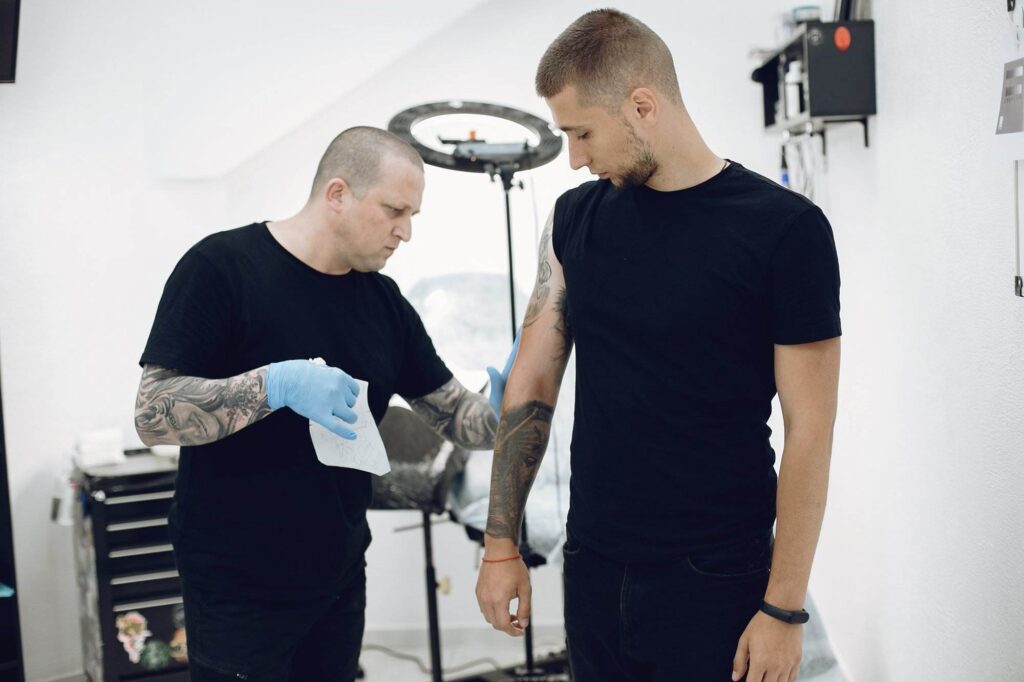
Proper Healing Techniques to Preserve Tattoo Appearance
Once the tattoo is inked on the skin, proper aftercare is essential to ensure the design heals beautifully and remains effective in covering scars and stretch marks. Healing isn’t just about avoiding infections; it’s also about ensuring that the tattoo retains its vibrancy and texture. Here are some key aftercare techniques:
- Initial Cleaning: After the tattoo is done, it’s important to follow the artist’s instructions on cleaning. Generally, the area should be gently washed with mild soap and lukewarm water to remove any excess ink or plasma without scrubbing.
- Avoid Soaking: In the initial weeks, it’s advisable to avoid soaking the tattoo in baths, pools, or hot tubs. Excess moisture can alter the healing process and affect the tattoo’s appearance.
- Watch for Healing Signs: Keep an eye on the healing process. Tattoos should generally scab and flake as they heal. If there are unusual signs, such as increased redness or pus, consulting a healthcare professional is important.
- Patience is Key: Healing can take time, especially over scar tissue, which may react differently compared to normal skin. Being patient and gentle with the area can lead to optimal results.
Moisturizing and Sun Protection for Long-lasting Results
Moisturizing and sun protection play a significant role in maintaining the integrity of both tattoos and the skin underneath. Here are some effective strategies:
- Hydration is Essential: Keeping the tattoo moisturized can prevent dryness, flaking, and cracking. Using fragrance-free, tattoo-specific moisturizers or natural oils can help maintain elasticity and color vibrancy. It’s important to begin moisturizing once the tattoo has started to heal properly, as advised by the artist.
- Sunscreen Application: Once the tattoo is fully healed, protect the area from sun exposure. Harmful UV rays can fade tattoo colors over time. A broad-spectrum sunscreen with an SPF of at least 30 should be applied whenever the tattoo is exposed to sunlight. This protection is especially vital for scars, as sun exposure can cause further discoloration.
- Clothing Choices: For those days when sunscreen isn’t enough, wearing protective clothing over the tattoo can act as an additional barrier against the sun. Choosing clothing that’s breathable but offers coverage can help maintain the tattoo’s appearance over the long term.
By adhering to these aftercare tips, individuals can ensure that their tattoos effectively conceal scars and stretch marks while remaining vibrant and beautiful. Being proactive about healing and protection not only enhances the appearance of the tattoo but also supports overall skin health.

